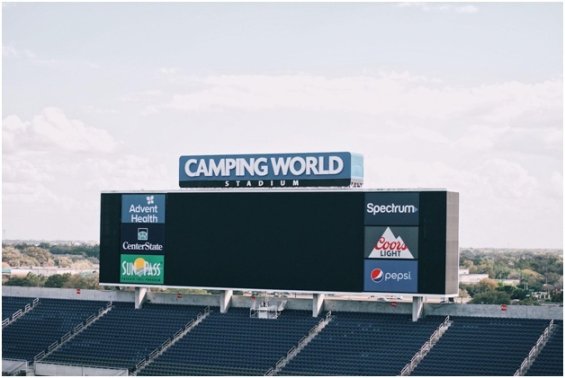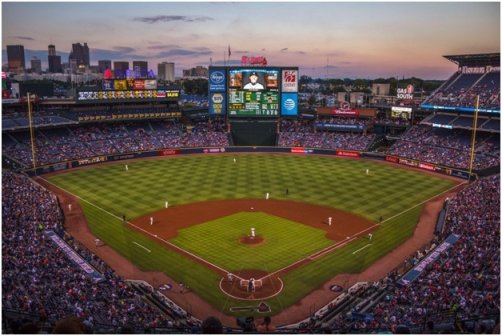Outfitting a stadium requires extensive work in order to prepare it for its intended use, such as a football stadium or a multi-use college stadium. Each will have different design needs.
Concessions
Modern fans expect more than just a seat to watch a game; they want an unforgettable experience and the chance to socialize with their peers. Stadiums must therefore offer innovative amenities, such as more gathering places, special seats, block seating, or hospitality seating options.
One way to draw crowds and keep them coming back for more action on the field is to add a bar or lounge with clear views of the action. This will let fans experience two of their favorite scenes at once: rowdy crowds inside sports bars and live action outside on the pitch. Furthermore, fans can purchase food and drink without leaving their seats!

Concessions are an invaluable way for stadiums to draw in new fans while increasing revenue streams. Concessions sell food and drinks on site or allow fans to order it via mobile device; merchandise sales also become possible; in fact, some even use robots to handle sales!
As well as concessions, stadium construction projects present owners with other opportunities. They could spark neighborhood development around a stadium site; open up revenue streams through naming rights and sponsorship deals; or create jobs locally by encouraging neighborhood growth. To maximize these potential gains, owners should look for ways to reduce costs and boost profit margins.
Restrooms
Sports fans take great delight in watching games together with family and friends. You can click the link: https://www.cnbc.com/why-being-a-sports-fan-and-rooting-for-a-team-is-good-for-you.html to learn more about the health benefits of being a sports fan.
Whether supporting local high school teams, professional players, and teams in the NFL, NBA, NHL, or MLB, or simply gathering to cheer them on as a group – and want more than just seats and concessions to enjoy an immersive viewing experience.
Stadiums must provide plenty of restrooms to cater to all their fans, but designing washrooms that maximize capacity and enhance fan experience is no simple task.
Stadiums frequently experience difficulties with toilet line-ups during games and events, even though codes generally require three women’s stalls for every two men’s. But this doesn’t always correspond with crowd numbers.
Other venues rely on dynamic signage to switch gender assignments based on the makeup of their crowd, which can help avoid long lines. AT&T Stadium uses this technique when hosting Taylor Swift concerts by changing multiple men’s stalls into women’s rooms; then switching back for Cowboys games.

Security
As you plan a stadium design, take careful note of its intended uses and how to attract and keep fans. Your goal should be for them to return year after year – not simply be spectators watching games from a stand.
When selecting locations, pay special attention to any infrastructure networks nearby that might help enhance fan experiences.
Urban stadiums may find that providing nearby transportation options that enable residents to access it by foot or bike can encourage attendance among those who would otherwise struggle with buying tickets or reaching your stadium.
As soon as you know your timeline, budget, and funding sources for designing your stadium, the next step should be designing it.
The first phase of architectural design, called schematic design, allows you and your architect to decide upon size and shape of the stadium; architects will produce rough sketches at this stage, along with producing an inventory list and conducting site visits to ascertain existing conditions.
Scoreboards
Sports fans have likely come across impressive digital scoreboards and video displays at games.
These displays can vary in shape, size, and type; from large screens spanning both end zones to smaller auxiliary scoreboards. Each type of stadium scoreboard serve the same purpose: keeping fans informed of how their team is faring in a game. This helps to keep fans engaged.
Some stadiums have installed LED boards the height of an outfield wall to replace or supplement existing manual scoreboards or as an upgrade on existing ones. These durable boards can withstand fielders colliding with them or the impact of baseballs hitting against its panel.
Large-scale display systems can be very difficult to manage and operate, requiring extensive wiring connections with the control room. Electro-mechanical scoreboards traditionally utilized one wire that supplied power as input for their display inputs as well as input power. More recently, engineers have devised systems using separate wires for power and display inputs.
At an athletic event, all eyes are focused on both the players and scoreboards – the latter of which often makes or breaks a game and serves as the most prominent component of a stadium. You can learn more about scoreboards by clicking the link.
Aside from sporting events, these scoreboards also serve as an opportunity to promote sponsors or products, enabling stadiums to maximize their return while improving fan experiences.
There is a lot to consider when outfitting a modern stadium. Be sure to outfit your facility with the very best in order to keep fans happy and entertained!

